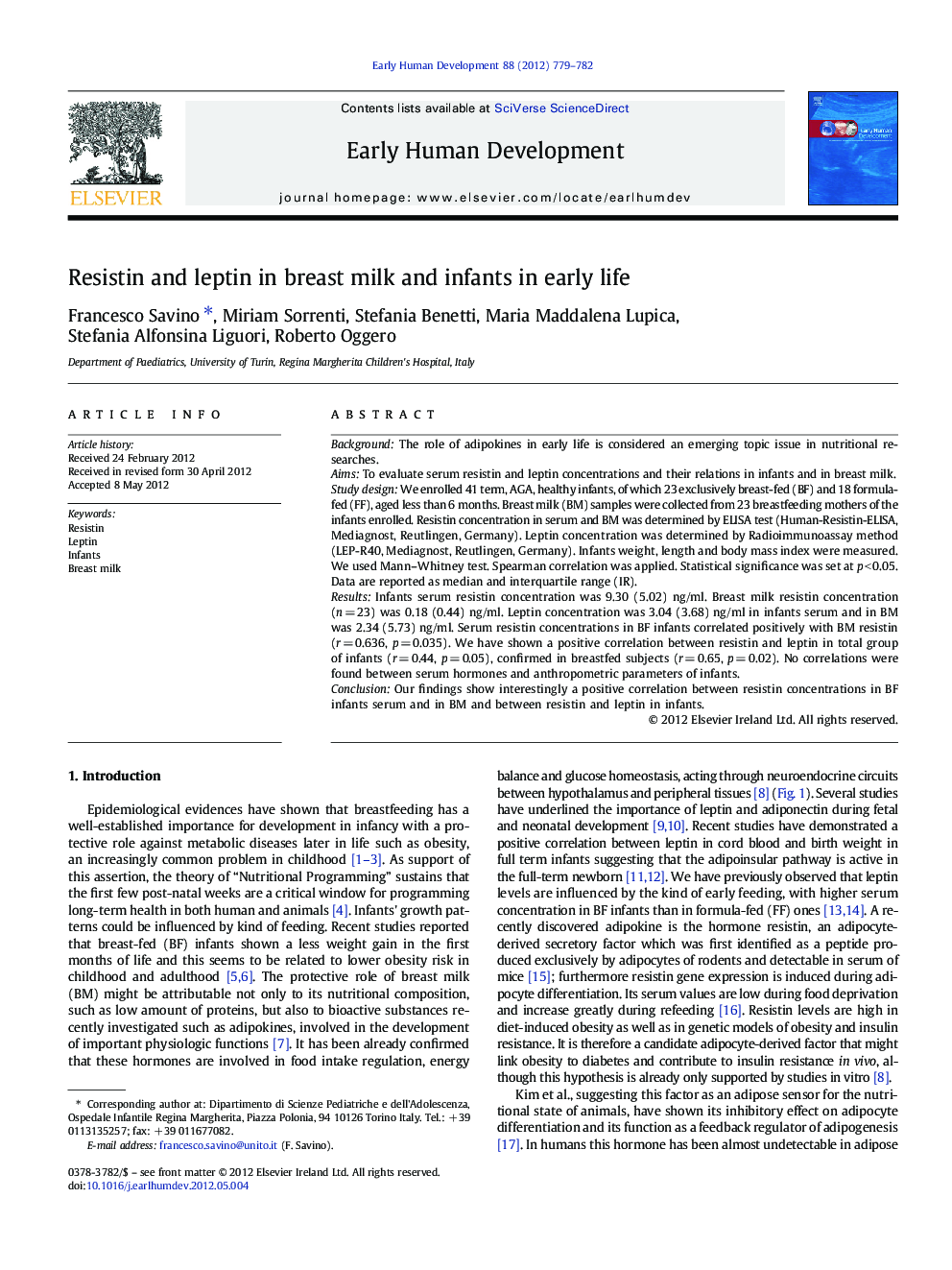| Article ID | Journal | Published Year | Pages | File Type |
|---|---|---|---|---|
| 3918365 | Early Human Development | 2012 | 4 Pages |
BackgroundThe role of adipokines in early life is considered an emerging topic issue in nutritional researches.AimsTo evaluate serum resistin and leptin concentrations and their relations in infants and in breast milk.Study designWe enrolled 41 term, AGA, healthy infants, of which 23 exclusively breast-fed (BF) and 18 formula-fed (FF), aged less than 6 months. Breast milk (BM) samples were collected from 23 breastfeeding mothers of the infants enrolled. Resistin concentration in serum and BM was determined by ELISA test (Human-Resistin-ELISA, Mediagnost, Reutlingen, Germany). Leptin concentration was determined by Radioimmunoassay method (LEP-R40, Mediagnost, Reutlingen, Germany). Infants weight, length and body mass index were measured. We used Mann–Whitney test. Spearman correlation was applied. Statistical significance was set at p < 0.05. Data are reported as median and interquartile range (IR).ResultsInfants serum resistin concentration was 9.30 (5.02) ng/ml. Breast milk resistin concentration (n = 23) was 0.18 (0.44) ng/ml. Leptin concentration was 3.04 (3.68) ng/ml in infants serum and in BM was 2.34 (5.73) ng/ml. Serum resistin concentrations in BF infants correlated positively with BM resistin (r = 0.636, p = 0.035). We have shown a positive correlation between resistin and leptin in total group of infants (r = 0.44, p = 0.05), confirmed in breastfed subjects (r = 0.65, p = 0.02). No correlations were found between serum hormones and anthropometric parameters of infants.ConclusionOur findings show interestingly a positive correlation between resistin concentrations in BF infants serum and in BM and between resistin and leptin in infants.
